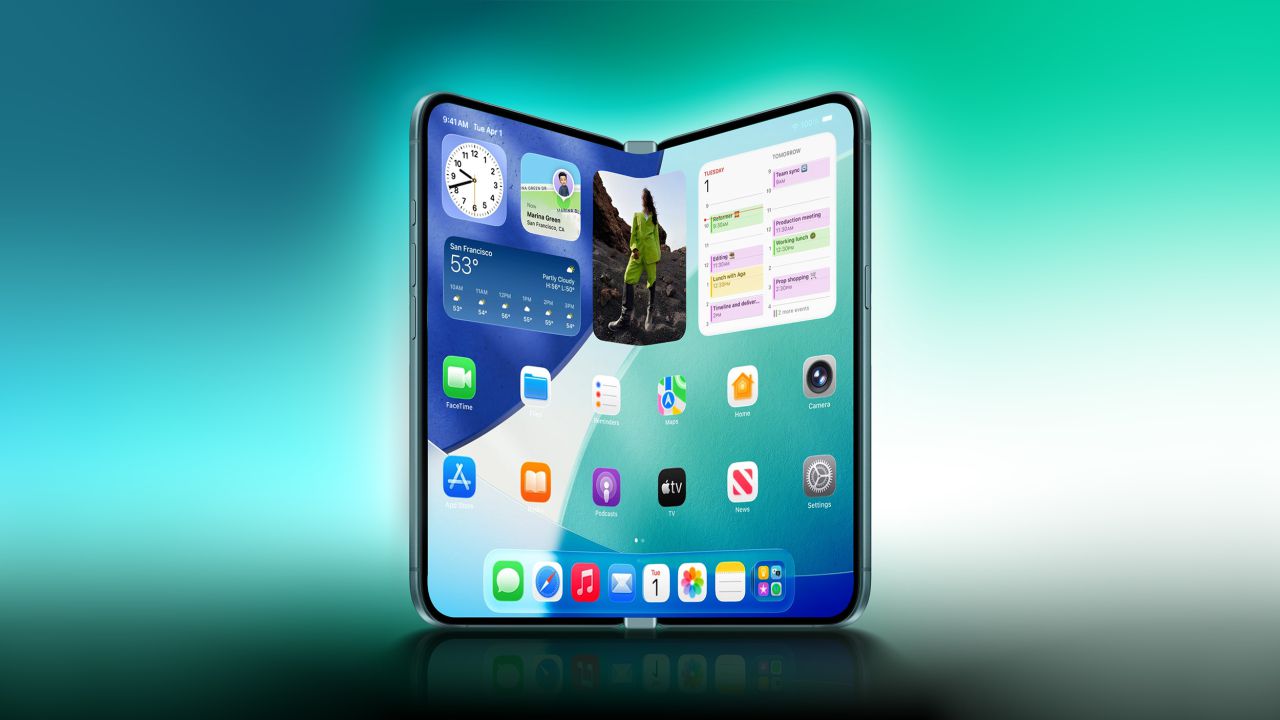Apple Foldable iPhone: Titanium and Aluminum Frame Explained
Apple is reportedly taking a bold step into the foldable smartphone market, and new insights suggest that the company is carefully choosing its materials to balance strength, weight, and thermal efficiency. The long-rumored foldable iPhone is expected to combine titanium and aluminum in its structural frame — a design decision that speaks volumes about Apple’s commitment to premium build quality and durability.
With competitors like Samsung and Motorola having years of experience in the foldable space, Apple must differentiate itself by addressing common pitfalls such as hinge reliability, screen fragility, and overall device heft. By blending titanium with aluminum, the company is aiming to produce a foldable device that is robust yet lightweight, ensuring longevity and a premium feel.
Why Titanium Matters in Apple’s Foldable iPhone
Titanium has become a hallmark of Apple’s premium product design, already featured in the Apple Watch Ultra and select iPhone Pro models. For the foldable iPhone, titanium is expected to play a central role in structural integrity, particularly in hinge components and stress-intensive areas of the device.
Key Advantages of Titanium:
- Strength-to-Weight Ratio
Titanium is renowned for its exceptional strength relative to weight, making it perfect for a foldable device. The hinge mechanism and screen housing are prone to stress with repeated folding, and titanium ensures these critical areas maintain rigidity and durability. - Corrosion Resistance
Titanium naturally resists scratches and corrosion, maintaining the aesthetic integrity of the device even after years of use. This is essential for foldables, where repeated opening and closing can otherwise degrade material quality. - Hinge Longevity
The hinge is arguably the most delicate and failure-prone part of any foldable smartphone. Using titanium ensures that the foldable iPhone can withstand hundreds of thousands of folds, promising reliability that early adopters will appreciate.
By incorporating titanium in high-stress points, Apple addresses one of the most common concerns among foldable phone users: fragility.
Aluminum’s Role in the Frame
While titanium offers unmatched strength, it is dense and costly. This is where aluminum complements Apple’s design strategy. The foldable iPhone’s larger, less stress-intensive body sections are likely to be made from aluminum, allowing Apple to maintain weight balance, cost control, and heat management.
Aluminum Benefits:
- Weight Reduction
Aluminum is significantly lighter than titanium or steel. A foldable device inherently has two screen halves and two batteries, which can make it feel bulky. Using aluminum for most of the frame keeps the device manageable in daily use. - Cost Management
Titanium is expensive. Aluminum helps control the overall Bill of Materials (BOM), offsetting high costs of titanium used in the hinge and critical components. - Heat Dissipation
Aluminum is an excellent thermal conductor, aiding in dispersing heat from processors and internal logic boards. Foldables, which cram complex components into tight spaces, benefit from this property to prevent thermal throttling during intensive tasks.
Combining titanium and aluminum represents a careful balance of premium durability, cost efficiency, and practical functionality, showing Apple’s meticulous approach to design and engineering.
Design Implications of the Titanium-Aluminum Frame
Apple’s choice of materials is not just about performance — it also affects the foldable iPhone’s aesthetic and ergonomics.
- Premium Price Point: Titanium is expensive, which signals that the foldable iPhone will likely be priced above the current iPhone Pro Max models, targeting the luxury smartphone segment.
- Slim Profile: Competitors’ foldables often feel thick when folded. By using titanium in critical areas and aluminum elsewhere, Apple can reduce bulk, giving the device a sleek, modern silhouette.
- Durable Yet Lightweight: Users can expect a device that feels robust in the hand without being unwieldy, thanks to this careful material selection.
The frame’s design also suggests Apple is prioritizing longevity and reliability, key selling points for users hesitant to adopt foldable technology due to past issues with hinges and screen durability.
Potential Technical Advantages
- Structural Integrity
Using titanium in hinge and stress-prone areas ensures the foldable iPhone can endure long-term use without bending, cracking, or malfunctioning. - User Comfort
Aluminum’s lighter weight makes the phone easier to hold and use, particularly in unfolded mode, which can otherwise feel heavy with dual screens. - Performance Stability
Aluminum’s thermal conductivity helps maintain consistent device performance during gaming, video streaming, or multitasking, reducing the risk of overheating. - Aesthetic Appeal
Both titanium and aluminum are visually appealing, contributing to the premium, industrial look that Apple products are known for.
Challenges and Considerations
While the titanium-aluminum blend is promising, Apple will still face several challenges:
- Manufacturing Complexity: Combining two metals with different properties requires precise engineering and advanced metal joining techniques.
- Cost of Production: Titanium’s expense may limit profit margins unless offset by premium pricing.
- Durability Testing: Foldable devices face mechanical stress unlike traditional smartphones. Apple will need extensive testing to ensure hinge longevity.
Market Positioning
Apple enters the foldable segment later than competitors, including Samsung’s Galaxy Z Fold series and Motorola’s Razr series. However, by using premium materials, the foldable iPhone is positioned as a high-end alternative, emphasizing durability, design, and user experience rather than low cost.
The titanium-aluminum approach suggests:
- Professional-grade build quality
- Long-lasting performance
- Premium pricing strategy
Apple appears to be aiming for loyal, high-end consumers who are willing to pay for innovation and reliability rather than competing purely on price.
What This Means for Consumers
For early adopters, the choice of titanium and aluminum has several practical benefits:
- Durability: Titanium ensures hinge reliability and reduces risk of long-term structural failure.
- Comfortable Weight: Aluminum keeps the device manageable in daily use, avoiding “brick-like” feel.
- Thermal Management: Aluminum helps prevent overheating, maintaining smooth performance.
- Premium Feel: The combination of metals provides a solid, luxurious tactile experience.
Overall, Apple’s foldable iPhone may offer one of the most robust foldable designs on the market, addressing the major criticisms of earlier foldable models.
Final Thoughts
Apple’s reported use of titanium and aluminum in its foldable iPhone demonstrates the company’s commitment to quality, durability, and user experience. By leveraging titanium for strength and aluminum for weight reduction and heat dissipation, Apple is positioning its foldable as a premium, reliable device that meets the expectations of its loyal user base.
While we await official announcements regarding pricing, availability, and technical specs, this material strategy strongly indicates that the foldable iPhone is being designed to last longer, feel lighter, and perform better than earlier foldable smartphones.
With Apple entering the foldable space with this careful engineering approach, the future of foldable devices looks promising, durable, and sleek.
⚠️ Disclaimer
This article is based on reports and industry sources about Apple’s foldable iPhone. Details regarding materials, design, and release are speculative until officially confirmed by Apple. All Apple trademarks and product names belong to Apple Inc.
Read Also:

